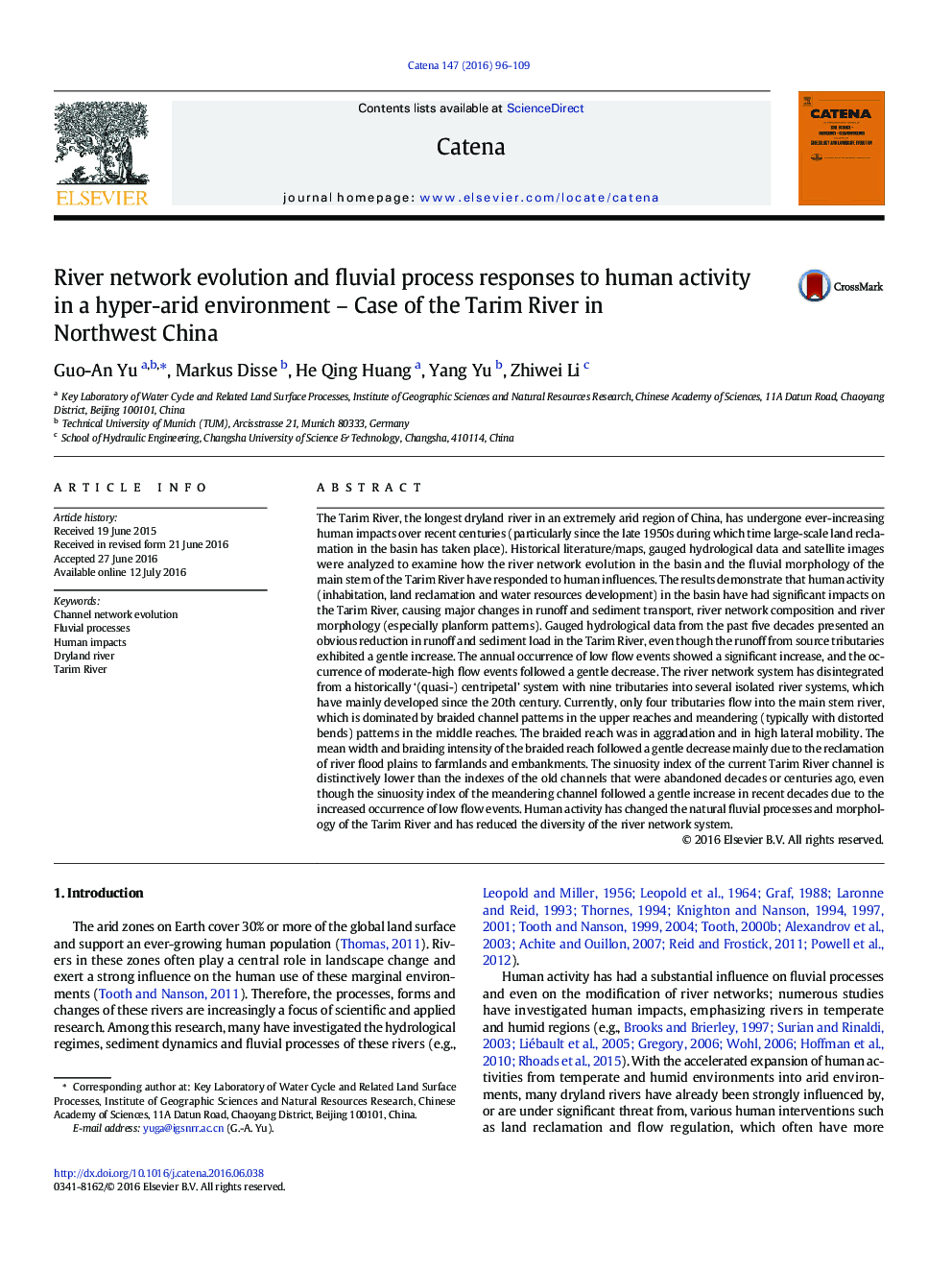| Article ID | Journal | Published Year | Pages | File Type |
|---|---|---|---|---|
| 6407692 | CATENA | 2016 | 14 Pages |
â¢The Tarim River has undergone ever-increasing human impacts over recent centuries.â¢Runoff/sediment load of the river and vegetation in the basin decreased obviously.â¢Quasi-centripetal river network system disintegrated into isolated river systemsâ¢Mean width and braiding intensity of braided channel in last decades gently decreasedâ¢Sinuosity degree of current channels distinctively lower than old abandoned channels
The Tarim River, the longest dryland river in an extremely arid region of China, has undergone ever-increasing human impacts over recent centuries (particularly since the late 1950s during which time large-scale land reclamation in the basin has taken place). Historical literature/maps, gauged hydrological data and satellite images were analyzed to examine how the river network evolution in the basin and the fluvial morphology of the main stem of the Tarim River have responded to human influences. The results demonstrate that human activity (inhabitation, land reclamation and water resources development) in the basin have had significant impacts on the Tarim River, causing major changes in runoff and sediment transport, river network composition and river morphology (especially planform patterns). Gauged hydrological data from the past five decades presented an obvious reduction in runoff and sediment load in the Tarim River, even though the runoff from source tributaries exhibited a gentle increase. The annual occurrence of low flow events showed a significant increase, and the occurrence of moderate-high flow events followed a gentle decrease. The river network system has disintegrated from a historically '(quasi-) centripetal' system with nine tributaries into several isolated river systems, which have mainly developed since the 20th century. Currently, only four tributaries flow into the main stem river, which is dominated by braided channel patterns in the upper reaches and meandering (typically with distorted bends) patterns in the middle reaches. The braided reach was in aggradation and in high lateral mobility. The mean width and braiding intensity of the braided reach followed a gentle decrease mainly due to the reclamation of river flood plains to farmlands and embankments. The sinuosity index of the current Tarim River channel is distinctively lower than the indexes of the old channels that were abandoned decades or centuries ago, even though the sinuosity index of the meandering channel followed a gentle increase in recent decades due to the increased occurrence of low flow events. Human activity has changed the natural fluvial processes and morphology of the Tarim River and has reduced the diversity of the river network system.
